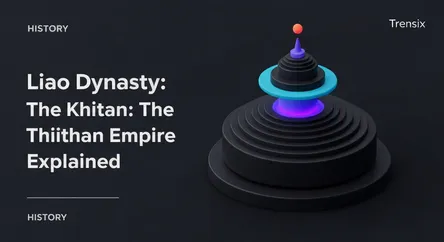History
Liao Dynasty: The Khitan Empire Explained

Discover the Liao Dynasty (907-1125), the powerful Khitan empire that ruled parts of Northern China and shaped the course of East Asian history.
What is it?
The Liao Dynasty (907-1125), also known as the Khitan Empire, was a powerful state founded by the nomadic Khitan people. Established by Yelü Abaoji, it emerged after the collapse of the Tang Dynasty and controlled a vast territory that included modern-day Manchuria, Inner Mongolia, and parts of northern China, the Korean Peninsula, and Siberia. A defining feature of the Liao was its innovative dual system of administration. A northern government managed the nomadic Khitan and other tribes according to their traditions, while a southern government, modeled on the Chinese Tang Dynasty, ruled over the sedentary agricultural population. This allowed the Khitan to govern a multi-ethnic empire effectively while preserving their own cultural identity.
Why is it trending?
The Liao Dynasty is a subject of growing historical interest because it challenges traditional narratives of Chinese history. It was one of the first "conquest dynasties" where a non-Han group ruled a significant part of China, setting a precedent for later empires like the Jin, Yuan, and Qing. Its complex relationship with the rival Song Dynasty to the south, marked by both conflict and a century-long peace treaty known as the Chanyuan Covenant of 1005, is a key area of study. This treaty forced the Song to pay annual tribute, recognizing the Liao as a political equal. The dynasty's cultural achievements in architecture, literature, and its unique Khitan scripts also draw significant attention.
How does it affect people?
Historically, the Liao Dynasty's rule created a unique multicultural society. Its dual administration allowed different ethnic groups, primarily the Khitan and Han Chinese, to live under legal systems familiar to them. This integration promoted economic and cultural exchange between nomadic and agricultural societies. The Liao's power had a lasting geopolitical impact, influencing the balance of power in East Asia for over two centuries. In fact, the name for China in many Slavic and Western languages, such as "Kitai" in Russian and the archaic "Cathay," originates from the name "Khitan," demonstrating their historical significance to the outside world.